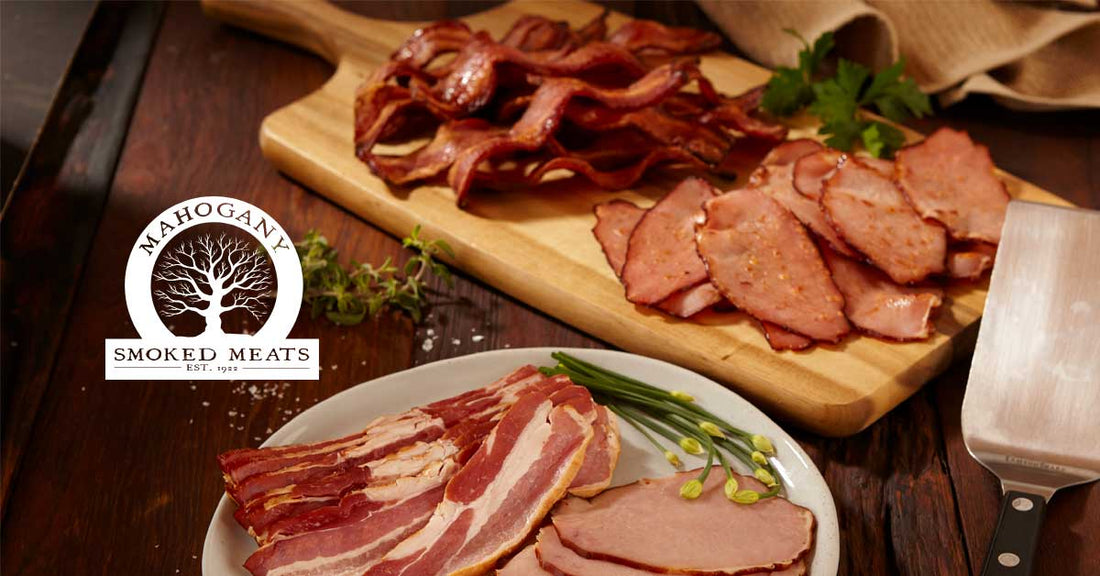
Master the Art of Carving: Bone-in Ham Slicing Made Easy
Chad MathewsShare
Choosing the Right Tools
When it comes to preparing a memorable meal, choosing the right tools is essential. High-quality knives, cutting boards, and serving utensils can significantly enhance your cooking experience. Investing in the right equipment not only makes food preparation easier but also ensures that your dishes are presented beautifully, allowing you to impress your guests effortlessly.
Additionally, the right tools can elevate the flavors and textures of your dishes. For instance, using a sharp carving knife for slicing ham ensures clean cuts, preserving the meat's juiciness. Similarly, specialized tools for smoking or grilling can enhance the overall taste of your meals.
By selecting the appropriate kitchen tools, you can create a delightful dining experience that brings your loved ones together.
Preparing the Ham for Carving
Preparing a ham for carving is an essential step in ensuring a delightful dining experience. Start by allowing the ham to rest after cooking, which helps the juices redistribute throughout the meat. This simple act enhances flavor and tenderness, making each slice more enjoyable.
Next, gather the necessary tools for carving, including a sharp carving knife and a sturdy cutting board. A well-sharpened knife will glide through the meat, creating clean, even slices. Having the right equipment not only makes the process easier but also ensures a more visually appealing presentation.
When ready to carve, locate the bone and slice along its natural contours. This technique allows for maximum meat extraction while minimizing waste. As you carve, aim for uniform slices, which not only look appealing but also ensure consistent serving sizes for your guests.
Finally, arrange the carved ham on a platter, garnishing it with fresh herbs or fruits for an attractive display. This thoughtful presentation elevates the dining experience, inviting your loved ones to indulge in the delicious flavors of your perfectly prepared ham.
Identifying the Ham Structure
Identifying the ham structure is essential for both cooking and serving. A bone-in ham typically features a prominent bone that runs through the center, providing a guide for slicing. Understanding the anatomy of the ham helps in determining the best way to carve it, ensuring that each slice is tender and flavorful, enhancing the overall dining experience.
When examining a ham, you'll notice two primary muscle groups: the leg and the shank. The leg is the larger portion, while the shank is the smaller end. Recognizing these sections allows for more precise cuts, which can be particularly beneficial during holiday gatherings. Proper identification of these areas not only aids in presentation but also ensures that guests receive evenly sized portions.
Additionally, the fat cap on a ham plays a crucial role in flavor and moisture retention. This layer of fat can be scored to enhance the caramelization during cooking, resulting in a deliciously crispy exterior. By understanding the ham's structure, you can maximize its taste and texture, making your holiday meals memorable and enjoyable for everyone at the table.
Step-by-Step Carving Process
Carving a bone-in ham can elevate your holiday feast, making it a centerpiece that draws everyone together. Start by ensuring you have a sharp carving knife and a sturdy cutting board. Begin by removing the skin, then slice along the bone to create even, succulent pieces. This method not only enhances presentation but also maximizes flavor.
As you carve, remember to cut against the grain for tender slices that melt in your mouth. Serve the ham with a variety of sides to complement its rich taste, creating a memorable meal for your loved ones. With each slice, you’ll not only satisfy appetites but also create lasting memories around the table, celebrating the joy of togetherness.
Tips for Perfect Slices
To achieve perfect slices of ham, start by using a sharp carving knife to ensure clean cuts. Let the ham rest after cooking to retain its juices, making slicing easier. Cut against the grain for tender pieces, and aim for even thickness to enhance presentation. Finally, serve immediately to enjoy the ham's rich flavors at their best.Serving Suggestions
When planning a holiday feast, consider serving bone-in ham alongside a variety of complementary sides. Roasted vegetables, creamy mashed potatoes, and tangy coleslaw can enhance the meal's flavor profile. For a festive touch, add cranberry sauce or a honey glaze to elevate the ham's natural sweetness, creating a memorable dining experience for your guests.
To make the most of your leftovers, think creatively about how to repurpose them. Ham can be diced and added to omelets, incorporated into hearty soups, or used as a flavorful sandwich filling. Pairing it with fresh greens or whole-grain bread can create a satisfying lunch option.
With these serving suggestions, you can ensure that every bite is enjoyed, both during the feast and beyond.
Common Mistakes to Avoid
When preparing a holiday feast, one common mistake is underestimating the amount of food needed. Guests often have larger appetites than anticipated, leading to a shortage of dishes. To avoid this, consider the number of guests and their preferences, ensuring you have enough variety and quantity to satisfy everyone. Planning ahead can alleviate stress and enhance the dining experience.
Another frequent error is neglecting the importance of proper food storage. Leftovers can quickly spoil if not stored correctly, leading to waste and potential health risks. It's essential to refrigerate or freeze any uneaten food promptly. Labeling containers with dates can help keep track of freshness, ensuring that your delicious creations are enjoyed long after the event.
Lastly, many hosts overlook the significance of timing when serving their meals. Preparing dishes too early can result in cold or overcooked food, diminishing the overall quality. To avoid this, create a timeline for cooking and serving, allowing each dish to be enjoyed at its peak. This attention to detail can elevate your gathering, making it a memorable occasion for all.
